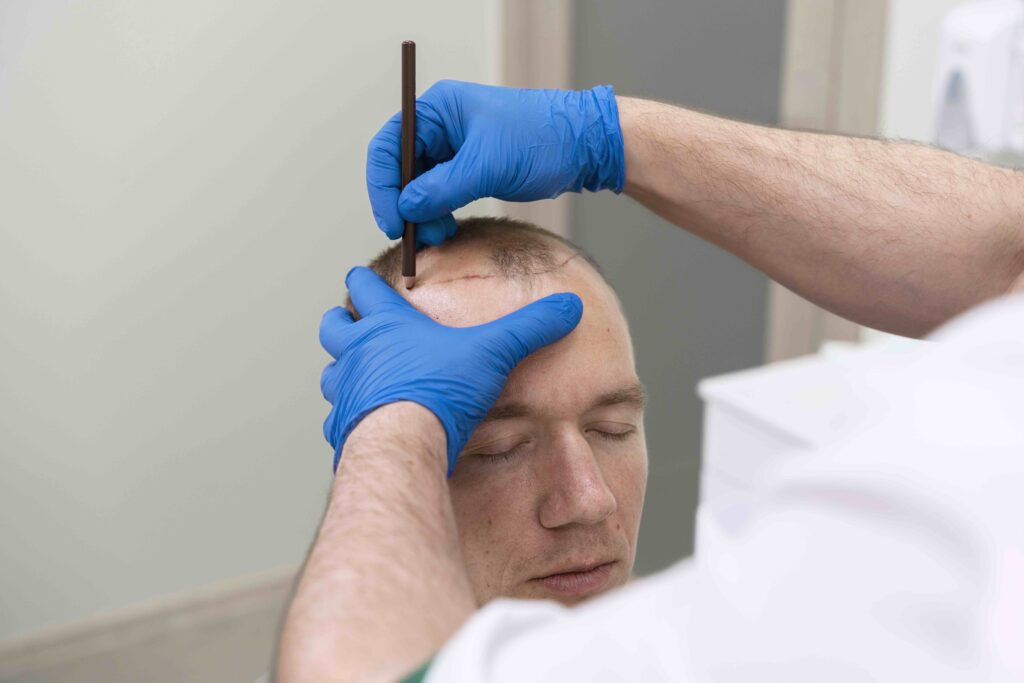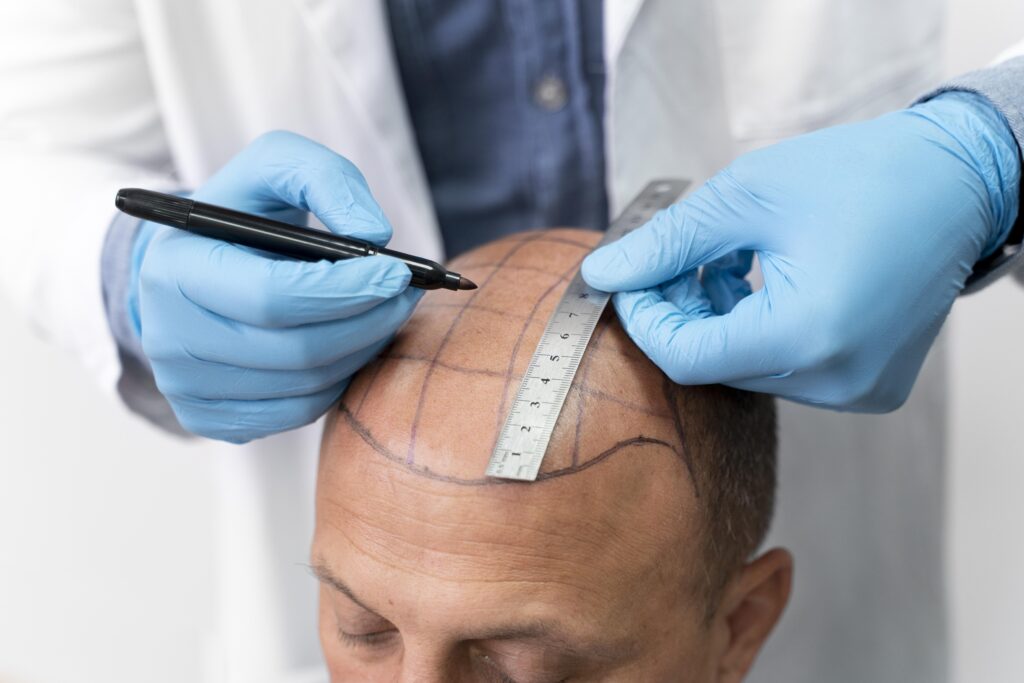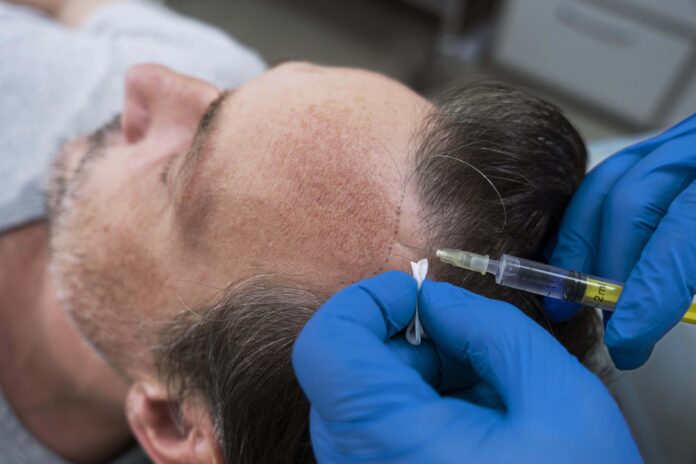The Pros and Cons of PRP Treatment
The Rise of Platelet-rich Plasma (PRP) Treatment in Modern Medicine
In today’s world, regenerative medicine has quickly taken center stage as an alternative to traditional medical treatments. One such treatment is platelet-rich plasma (PRP) therapy, which has gained popularity in recent years due to its effectiveness and minimal side effects.
PRP therapy involves the use of a patient’s own blood, which is centrifuged to concentrate the platelets and growth factors that are essential for healing. These concentrated platelets are then injected into the injured area, promoting tissue regeneration and accelerating the healing process.
PRP therapy has become popular among athletes who suffer from sports-related injuries and individuals dealing with hair loss. It has also been used in dentistry to improve gum health and promote bone regeneration.
What is Platelet-rich Plasma (PRP) ?
Platelet-rich plasma (PRP) therapy is a medical treatment that uses a patient’s own blood to promote healing. It works by concentrating the natural growth factors found in platelets, which are then injected into the targeted area. This leads to improved tissue regeneration and faster recovery time.
The process of obtaining PRP involves drawing blood from the patient’s arm and placing it into a centrifuge that spins at high speeds. This separates out the different components of blood, with red blood cells being separated from white blood cells and plasma.
The remaining plasma is then further processed to concentrate platelets before being injected into the affected area. While PRP treatment may not be suitable for all patients or conditions, it offers several benefits for individuals looking for natural alternatives to surgery or medication with minimal side effects.
What is Platelet-rich plasma (PRP) Treatment?
Platelet-rich plasma (PRP) treatment is a medical procedure that uses the patient’s own blood to promote healing and regeneration in injured or damaged tissues. PRP contains a concentrated amount of platelets and growth factors, which are essential for the repair and regeneration process.
The treatment involves taking a small amount of blood from the patient, processing it in a centrifuge to separate the platelets, and then injecting the concentrated PRP into the targeted area. The way PRP works is by stimulating the body’s natural healing mechanisms.
Platelets are known to contain growth factors that can help repair damaged tissues. When concentrated, these growth factors can be used to accelerate healing in areas that are not healing properly on their own or need additional help.
The idea behind PRP treatment is that by injecting this concentration of platelets into an injured or damaged area, it will stimulate cellular repair and regeneration. The process of obtaining PRP begins with drawing blood from the patient – typically from their arm – just like a regular blood test.
The blood sample is then placed in a centrifuge machine that spins at high speeds to separate out different components based on weight. This separates out red and white blood cells from plasma, which floats above it.
Within this plasma layer, there are also different levels of density between white blood cells and platelets which can be further separated through an additional spin cycle. Once separated out correctly, the resulting platelet concentrate – about five times more than what’s usually found in normal blood – is injected back into the patient at the site needing treatment using ultrasound guidance or other techniques to ensure accuracy.
Overall, Platelet-rich plasma treatments offer a revolutionary solution for treating various injuries or conditions where traditional methods have failed. By using our own body’s natural healing mechanisms without reliance on medications or surgical interventions, patients can benefit from faster recoveries, less pain, and a reduction in the need for other treatments.
The Pros of PRP Treatment

Platelet-rich plasma (PRP) treatment has become a popular alternative to traditional surgery or medication due to its various benefits. One of the most significant advantages of PRP is that it can reduce healing time and increase tissue regeneration. This is because PRP contains growth factors that help stimulate the body’s natural healing process.
When injected into the targeted area, these growth factors can accelerate healing and promote tissue regeneration. Moreover, PRP treatment can be used to treat a variety of conditions, including sports injuries and hair loss.
Athletes often use PRP injections to heal faster from injuries such as tendonitis or ligament sprains. Additionally, PRP has been shown to be effective in treating hair loss by promoting hair growth and preventing further hair loss.
Another advantage of using PRP treatment is that it is a natural alternative to surgery or medication. Most traditional treatments involve invasive procedures or medications with potential side effects.
However, since PRP uses the patient’s own blood, there are no foreign substances introduced into the body during treatment. PRP treatment offers numerous benefits for patients seeking alternative forms of medical treatment.
It can reduce healing time and promote tissue regeneration while treating a variety of conditions such as sports injuries and hair loss. Furthermore, since it is a natural alternative to surgery or medication, there are no invasive procedures involved or potential side effects from foreign substances introduced into the patient’s body during treatment.
Cons of PRP Treatment

Potential Risks and Complications
Like any medical procedure, PRP treatment comes with potential risks and complications. Some patients may experience infection at the injection site, which could lead to further complications.
Additionally, there is a risk of nerve damage if the injection is not performed correctly. As with any medical treatment, it is important to weigh the potential risks against the benefits before proceeding with PRP therapy.
The Cost Factor
Another downside to PRP treatment is its cost. While prices can vary depending on location and provider, PRP injections are generally not covered by insurance plans.
This means that patients will need to pay for these treatments out of pocket. When considering this option, it’s important to factor in potential additional costs such as follow-up appointments or multiple rounds of injections.
Varying Results Depending on the Individual’s Condition
While many patients have reported positive results from PRP treatment, it’s important to note that results may vary depending on the individual’s condition. For some patients, multiple rounds of injections may be necessary before noticeable improvements are seen.
Others may not see significant results at all. It’s also worth noting that certain factors such as age and underlying health conditions can affect how well someone responds to PRP therapy.
While platelet-rich plasma (PRP) treatment has gained popularity in recent years due to its potential benefits for healing and tissue regeneration, it does come with some downsides as well. Patients should carefully consider the potential risks and costs associated with this therapy before deciding whether or not it’s right for them.
Additionally, it’s important to keep in mind that individual results may vary based on a variety of factors including age and overall health status. As always, consulting with a qualified medical professional is recommended when considering any new form of treatment.
How does PRP work for hair loss?
PRP therapy has become a popular option for those seeking to combat hair loss. The treatment involves injecting a concentrated amount of platelet-rich plasma into the scalp, which then stimulates the hair follicles and promotes hair growth.
The plasma contains growth factors that help to nourish and support the hair follicles, leading to thicker, healthier hair. The process begins with a small sample of blood being taken from the patient’s arm.
The blood is then placed in a centrifuge, where it is spun at high speeds to separate the platelets from the rest of the blood cells. Once separated, the concentrated platelet-rich plasma is injected into the scalp using a small needle.
While studies have shown that PRP can be an effective treatment for hair loss, it’s important to note that results may vary depending on individual circumstances. Multiple sessions may be required for optimal results, and it’s important to discuss any potential risks or side effects with your healthcare provider before undergoing treatment.
Can anyone receive PRP treatment?
In general, most people are good candidates for PRP therapy. However, there are certain factors that may make someone ineligible for treatment. For example, individuals with blood disorders or certain medical conditions may not be able to undergo therapy.
It’s also important to note that while PRP is considered a safe procedure overall, there are some risks associated with it. These risks include infection at the injection site or damage to surrounding nerves or tissues.
If you think you may be interested in undergoing PRP therapy, it’s best to schedule an appointment with a healthcare provider who specializes in this type of treatment. They can evaluate your individual circumstances and determine if you’re a good candidate.
Is there any downtime after receiving PRP injections?
One of the advantages of PRP therapy is that there is typically no downtime following the procedure. Most patients are able to return to their normal activities immediately after treatment.
However, it’s important to note that some patients may experience mild discomfort or swelling at the injection site, which can last for a few days. Your healthcare provider may recommend avoiding strenuous exercise or activities for a short period of time following treatment to help reduce the risk of complications.
Overall, PRP therapy is a minimally invasive procedure with few risks and minimal downtime. If you’re considering this type of treatment, it’s important to discuss your individual circumstances with a healthcare provider who can help you determine if it’s right for you.
Rarely Known Small Details
The history behind using platelets for healing
The use of platelets for healing goes back to the 1970s. The first documented case was that of a dentist named Dr. Ross who used his own blood to heal a patient’s jawbone.
He found that the blood clot he created in the site of surgery contained an abundance of platelets, which he believed helped with the healing process. This led him to start using patients’ own blood in other procedures, and eventually, Platelet-rich plasma (PRP) treatment was born.
Since then, PRP treatment has been embraced by medical professionals around the world as an effective way to promote tissue regeneration and speed up healing time. Initially used primarily in sports medicine and orthopedics, it has now expanded into other fields such as dermatology and even dentistry.
Conclusion
Platelet-rich plasma (PRP) treatment is a promising option for those looking for a natural way to promote tissue regeneration and speed up the healing process. While there are potential risks associated with this type of treatment, its benefits are hard to ignore.
From reducing recovery time after surgery to helping with hair loss and acne scars, PRP treatment offers many advantages over traditional treatments. As research continues to explore new applications for PRP treatment and technology improves, it’s likely that we will see even more widespread use of this technique in the coming years.
For those considering PRP treatment as an option for their health concerns, it’s important to discuss the risks and benefits with a qualified medical professional before making any decisions. Overall, PRP treatment represents an exciting development in modern medicine that holds great promise for patients seeking safe, effective alternatives to traditional treatments.



